NEWS
24 of the Most Dangerous Animals Roaming Texas
Published
3 months agoon
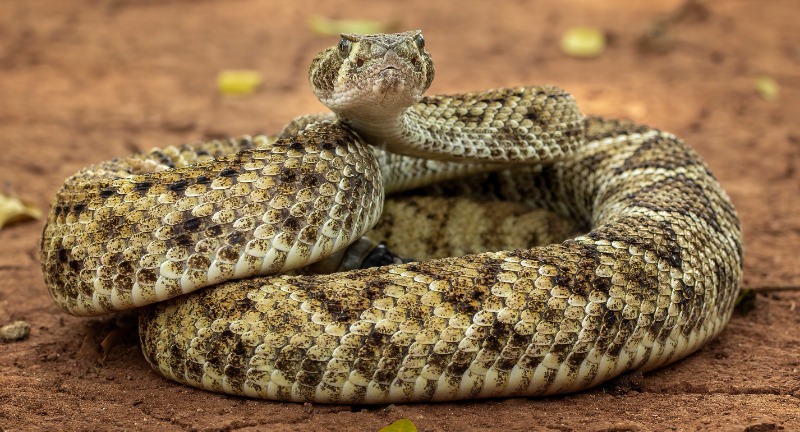
Shutterstock
Texas is a land of wild beauty, where sprawling deserts, dense forests, and winding rivers harbor a fascinating array of creatures. But beneath this natural splendor lies a roster of animals that can be as dangerous as they are captivating. With venomous snakes lurking in the underbrush to powerful predators prowling the plains, the Lone Star State is home to some of the deadliest creatures in North America.
All throughout the state, these animals demand respect and caution. Let’s uncover 24 of the most dangerous animals in Texas and how to stay safe in their presence.
Copperhead

Shutterstock
Copperheads are prevalent in East Texas forests and along the banks of rivers and streams, camouflaging perfectly in fallen leaves. Their venom is less potent than some other venomous snakes, but their bite is still excruciatingly painful and can cause severe swelling. Active mainly at dusk and dawn, they often venture into residential areas, increasing the risk of accidental encounters. Despite their camouflage, they will typically freeze in place rather than retreat, making them a danger to inattentive hikers.
Scorpions

Shutterstock
Several species of scorpions, including the striped bark scorpion, inhabit Texas, thriving in dry, rocky environments and even urban areas. Found throughout the state, they hide under rocks, logs, and in crevices during the day, becoming active at night. Their sting can cause intense pain, swelling, and allergic reactions, though fatalities are extremely rare. Always check shoes, clothing, and bedding if you’re in scorpion-prone regions to avoid an unpleasant encounter.
Alligator

Shutterstock
American alligators are native to East Texas, particularly in the swamps, marshes, and bayous of the Gulf Coast and Piney Woods. These large reptiles, which can exceed 10 feet in length, are opportunistic predators and can attack humans if provoked. Alligators pose the greatest risk during mating and nesting seasons when they become more territorial. Keeping a safe distance and avoiding areas where they are known to inhabit is key to staying safe.
Black Widow Spider

Shutterstock
Black widows are commonly found in shaded areas like garages, barns, and woodpiles across Texas. Their venom, containing a potent neurotoxin, can cause severe muscle cramps, nausea, and in rare cases, death. These spiders are usually shy and bite only when they feel threatened, such as when disturbed during their web-building. Awareness of their habitats and avoiding unnecessary contact with dark, cluttered areas can help prevent bites.
Brown Recluse Spider

Shutterstock
The brown recluse spider is common in Central and North Texas, preferring quiet, undisturbed spaces like attics and closets. Its bite is particularly dangerous due to its necrotic venom, which can lead to severe wounds and infections. These spiders are nocturnal and often go unnoticed, making accidental contact more likely. Wearing gloves and shaking out clothing or shoes stored in unused areas can minimize the risk of encounters.
Fire Ants

Shutterstock
Fire ants are an invasive species prevalent throughout Texas, thriving in yards, pastures, and parks. These aggressive insects sting repeatedly, injecting venom that causes painful, itchy pustules. In severe cases, especially for those allergic, stings can lead to life-threatening anaphylaxis. Their mounds are easily disturbed during gardening or outdoor activities, so it’s important to tread carefully in infested areas.
Texas Red-headed Centipede

Shutterstock
The Texas red-headed centipede, a strikingly large arthropod, is found in arid regions of Central and West Texas. Its venomous bite, while not fatal to humans, can cause significant pain, swelling, and localized numbness. These centipedes are nocturnal predators, preying on insects, and are often spotted near homes in rural areas. Avoiding direct contact and sealing gaps in structures can reduce the chance of an unwelcome encounter.
Tarantula Hawk

Shutterstock
Tarantula hawks are large, striking wasps found throughout Texas, particularly in desert and scrubland areas. Their sting is one of the most painful insect stings in the world, though it is not life-threatening. These solitary hunters prey on tarantulas, paralyzing them to provide food for their larvae. Though they are not aggressive toward humans, disturbing them can provoke a sting, so it’s best to admire these creatures from afar.
Jellyfish

Shutterstock
Jellyfish, including the notorious Portuguese man o’ war, are common along Texas’s Gulf Coast. Their tentacles deliver a venomous sting that causes intense pain, red welts, and, in rare cases, heart or respiratory issues. Swimmers, surfers, and beachgoers should remain vigilant, particularly during jellyfish season in the warmer months. Wearing protective clothing and avoiding washed-up jellyfish on shore can help prevent stings.
Coyote

Shutterstock
Coyotes are highly adaptable and can be found across Texas, from the plains of West Texas to the outskirts of major cities like Dallas and Houston. While they generally avoid humans, they can become aggressive when food is scarce or if they feel cornered. Attacks on pets and livestock are common, and in rare cases, they may attack humans. Securing garbage and avoiding feeding wildlife are key to minimizing conflicts with coyotes.
Bobcat

Shutterstock
Bobcats are elusive predators found throughout Texas, from the dense Piney Woods in the east to the open plains in the west. These solitary animals are generally shy but can become aggressive if rabid or protecting young. They are strong climbers and capable hunters, preying on small mammals and sometimes domestic animals. Avoid close encounters, especially in rural or suburban areas where their habitats overlap with human activity.
Cottonmouth

Shutterstock
Cottonmouths, also known as water moccasins, are semi-aquatic snakes found in East Texas’s wetlands, swamps, and slow-moving rivers. Their name comes from the white coloration inside their mouths, which they display when threatened. Known for their defensive aggression, these snakes can bite without significant provocation. Their venom is hemotoxic, causing severe pain, tissue damage, and sometimes systemic complications, so caution near water bodies is paramount.
Mountain Lion

Shutterstock
Mountain lions, also known as cougars, roam the rugged terrains of West Texas, including Big Bend National Park. These powerful predators are rarely seen but can be dangerous if they perceive a threat. Capable of taking down prey much larger than themselves, their sharp teeth and claws make them formidable. Hikers in cougar territory should stay alert, make noise to avoid surprise encounters, and never turn their back on a mountain lion.
Feral Hogs

Shutterstock
Feral hogs are an invasive species found in nearly every corner of Texas, from rural farmlands to urban fringes. These large, aggressive animals have sharp tusks and can cause serious injuries when charging. They are also carriers of diseases that can affect humans and livestock. Avoid approaching them, and if you encounter one, back away slowly while keeping an eye on the animal.
Raccoons

Shutterstock
Raccoons are common throughout Texas, especially near water sources or in suburban areas. While typically non-aggressive, they can carry rabies and other diseases that pose a danger to humans and pets. They may become hostile if cornered or if humans try to remove them from an area. Avoid feeding raccoons and secure trash cans to prevent attracting these curious creatures.
Eastern Timber Wolf

Shutterstock
Eastern timber wolves, though extremely rare in Texas today, are found near the state’s northeastern border. These large predators are territorial and may attack if provoked or cornered. They typically hunt in packs, which increases their danger to livestock and occasionally humans. While sightings are rare, it’s wise to exercise caution in remote areas where wolves might roam.
Black Bear

Shutterstock
Black bears are most commonly found in the mountainous regions of West Texas, including the Guadalupe Mountains and Big Bend National Park. Although they are shy and avoid human contact, they can be dangerous if startled or if humans come between a mother and her cubs. Black bears are strong and quick, capable of causing serious injuries with their claws and teeth. Proper food storage and avoiding bear encounters are crucial when camping in bear country.
Cane Toad

Shutterstock
The cane toad, an invasive species in Texas, is most commonly found near water sources in South Texas. Its skin secretes a potent toxin that can poison pets and humans if touched or ingested. Symptoms of contact include nausea, vomiting, and, in severe cases, respiratory distress. Be cautious when handling amphibians in the region, as distinguishing cane toads from native species can be difficult.
Texas Red Wolf

Shutterstock
The Texas red wolf, now critically endangered and rarely seen in the wild, historically roamed the eastern parts of the state. These wolves are shy but will defend themselves if threatened, especially when in packs. They are capable of attacking livestock and smaller animals, making them a concern for ranchers. While reintroduction efforts are ongoing, maintaining a respectful distance from any wolves is advised.
Texas Coral Snake

Shutterstock
This subspecies of the coral snake is found primarily in the southeastern and central parts of the state. While rarely aggressive, their potent neurotoxic venom makes them one of Texas’s most dangerous reptiles. Often spotted in moist wooded areas and near water sources, they are more active after rainfall or during cooler months. Their striking colors and secretive behavior make them a hidden danger to outdoor enthusiasts.
Bull Shark

Shutterstock
Bull sharks inhabit Texas’s Gulf Coast and occasionally venture into brackish rivers, like the Brazos and Trinity. Known for their adaptability to both salt and freshwater, they are one of the few shark species that can swim far inland. Bull sharks are aggressive predators and responsible for numerous attacks worldwide, making them a threat in both coastal waters and estuaries. Swimmers and fishermen are advised to remain cautious, especially in murky water where visibility is limited.
Kissing Bugs

Shutterstock
Kissing bugs, or triatomine bugs, are widespread across Texas, particularly in rural and suburban areas. They carry the parasite Trypanosoma cruzi, which causes Chagas disease, a potentially life-threatening illness. The bugs are nocturnal and often bite humans on the face while they sleep, transferring the parasite through their feces. To minimize risk, seal gaps in homes, use bed nets, and avoid sleeping outdoors in areas where kissing bugs are common.
Great Horned Owl

Shutterstock
Great horned owls, found statewide in Texas, are known for their piercing eyes and razor-sharp talons. They are most active at night and can be aggressive when defending their nests. Though attacks on humans are rare, they are powerful enough to inflict injuries if they feel threatened. Avoid getting too close to nesting areas during the breeding
season to prevent conflicts.
Western Diamondback Rattlesnake

Shutterstock
The Western Diamondback Rattlesnake is widespread across Texas, especially in arid regions like the Trans-Pecos and South Texas plains. Known for its diamond-patterned scales and signature rattle, this snake strikes when it feels threatened, delivering a venom that can cause severe pain and tissue damage. They often inhabit rocky outcrops, deserts, and grasslands, where they blend seamlessly with their surroundings. Hikers and ranchers should be especially cautious, as accidental encounters are common in these areas.
Conclusion

Shutterstock
Texas’s vast and diverse landscapes are home to some of the most fascinating yet dangerous creatures in the world. While these animals play crucial roles in their ecosystems, their presence requires awareness and respect to avoid potentially life-threatening encounters. By staying informed and taking precautions, you can safely explore the natural beauty of Texas without falling victim to its hidden dangers. Remember, a healthy respect for wildlife ensures not just your safety but also the protection of the incredible creatures that call Texas home.
More Amazing Animals+
-


25 Surprising Facts About Cocker Spaniels
-


25 Fun Facts About Wirehaired Pointing Griffons You’ll Love
-
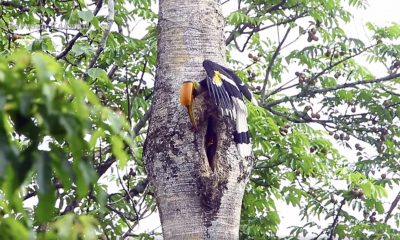

The most beautiful thing you will watch today. Great #Hornbill…
-


25 Ways Toy Fox Terriers Capture Our Hearts
-


25 Reasons Why English Bulldogs Are the Ultimate Couch Companions
-
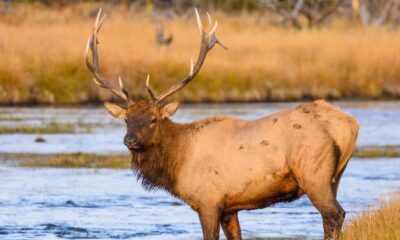

20 States Where Elk Still Thrive In The Wild
-
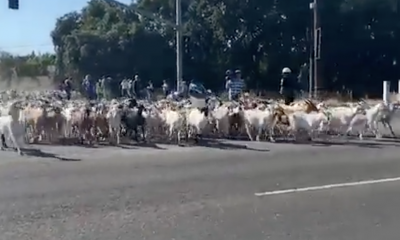

Goats Ushered Across a Road to Aid in California Fire…
-


25 Ways Jack Russell Terriers Bring Energy to Your Life
-
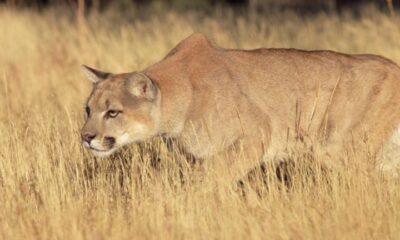

19 Astonishing Facts About Mountain Lions Most Didn’t Know
-


Danish Royal Life Guards escort duck family to Copenhagen harbor
-


24 Popular Dog Names To Steal From The British Royal…
-
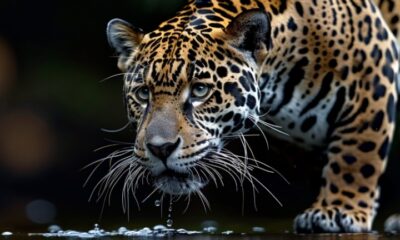

18 Facts That Highlight the Jaguar’s Majesty
